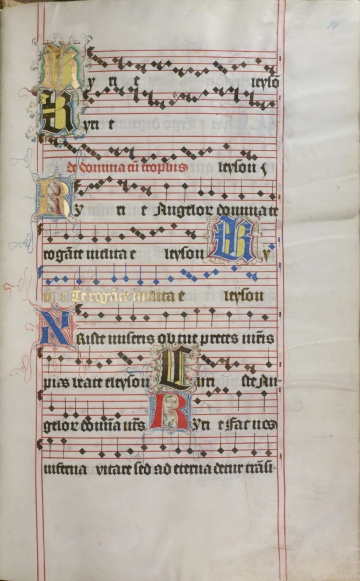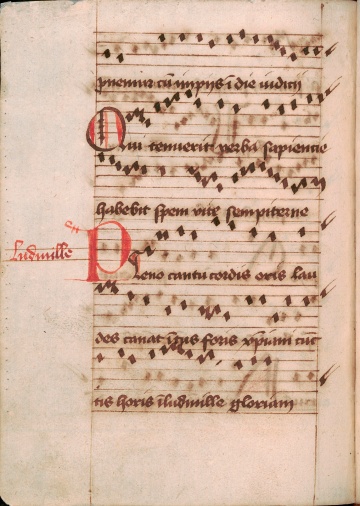Late medieval chant
Despite dramatic historical events and the creation of a Czech liturgy, the monophonic Latin liturgical chant remained the main repertoire cultivated in late medieval Bohemia. The specific historical developments did however significantly influence its profile and character. From the second half of the 14th century, for the first time in Czech history we record a marked increase in new liturgical monophonic chants composed for newly introduced feast days and festivities that enjoyed particular popularity (Marian feasts, the Feast of Corpus Christi, Czech patron saints, etc.). Composers were inspired by a new melodic feeling and produced new tunes that can be clearly distinguished from the repertoires of the previous centuries. Changes can also be observed in traditional forms. For examplethrough interpolation, strophic songs that can also be carried out separately find their way into Mass and Liturgy of the Hours chants. We can observe strong compositional activity particularly in the Mass Alleluias and sequences, and in the repertoire of the breviary in rhymed officiums and hymns. Following up on the pre-Hussite liturgical tradition at the end of the 15th century is also the Utraquist church, on whose soil another significant wave of composition of choral chants or modifications of older chants takes place – the last in Czech history.
The database Repertorium sequentiarum Bohemiae medii aevi currently has 290 sequences on record from 25 manuscripts of Bohemian and Moravian origin from the 14th to 16th century.
Florilegium provides a mini-edition of selected typical choral chants composed or handed down in Bohemia in the 15th century.





